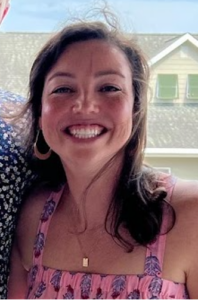
In this interview, we spoke with South Carolina reading interventionist Emma Bell about her use of SIPPS® with Meadowfield Elementary students who are in need of immediate intensive intervention.
She also reflects on how SIPPS aligns with South Carolina Foundations of Literacy Standards.
Tell us a little about yourself, your school/district, and the students that you serve.
My name is Emma Bell. I am a second year reading interventionist. Before becoming a reading interventionist, I was a classroom teacher for nine years.
My school, Meadowfield Elementary, is a large, high-poverty elementary school with about 650 students. The students I serve are identified through our universal screening process. They are all significantly below grade level and in need of immediate intensive intervention to close gaps and accelerate their progress.
How long have you been implementing SIPPS? Tell us a little about your implementation.
I was excited to receive SIPPS after attending an in-person event with Katharine Bonasera and Keri Bartholomew [Collaborative Classroom’s managers of educational partnerships in the Carolinas] in the fall of 2022.
In February of 2023, I was looking for a resource to support the kindergarten students I was working with in reading intervention. I spent time reading through the introduction pages in the SIPPS Beginning Level manual before reaching out to Katharine and Keri for more guidance.
Katharine met with me to clarify my questions and make sure I understood how to get started with instruction. One piece she shared with me was the Progress Tracking Form. I love how this form simply captures student data which can be shared with general education teachers and families.
I immediately saw the impact SIPPS has on students.
I used Beginning Level SIPPS with five groups of students during a six-week round of intervention in Spring 2023. While this was a short burst of instruction, I immediately saw the impact SIPPS has on students. This was a great way for me to get my feet wet with the program before launching into it at the start of the 2023–2024 school year.
What have you noticed about your students’ learning and engagement?
My students took to the SIPPS instructional routines right away. Having the SIPPS Little Books was especially impactful. Not only did students get the daily practice of applying the phonics and high frequency words they were learning in a connected text, but they also felt like readers.
Because those books are so tied to the program’s scope and sequence, my students experienced a high degree of success. This increased their movement, engagement, and confidence to read!
What are you thinking about as you consider your SIPPS implementation in the fall?
I work with so many students who would benefit from the systematic and explicit instruction that the SIPPS program offers.
As I head into the fall, I’m thinking first about how I will identify which students need SIPPS and how the placement assessment can help me strategically form my groups. I will want to have systems in place to track student progress to ensure they are moving through the program at the rate we expect.
I’ll need to think about how I execute the routines in SIPPS to make sure I am clear, concise, and consistent. I appreciate the QR codes that I can scan in the teacher’s manual that link me to videos of these routines. Perfecting my language will help me maximize the time for instruction in my groups.
What advice or insights would you share with an educator who is considering SIPPS as a resource for aligning their instruction to the new South Carolina CCR ELA standards?
SIPPS aligns with the South Carolina Foundations of Literacy Standards, so educators can feel confident that if they are teaching SIPPS and students are demonstrating mastery on the program’s mastery tests, then they are demonstrating mastery of the Foundations of Literacy Standards.
SIPPS aligns with the South Carolina Foundations of Literacy Standards so educators can feel confident that if they are teaching SIPPS and students are demonstrating mastery on the program’s mastery tests, then they are demonstrating mastery of the Foundations of Literacy Standards.
The way a SIPPS lesson builds from phonological awareness to phonics to high frequency words to application in reading and spelling weaves the standards together in a way that builds automaticity with decoding. This is such an important step for our students because they need this automaticity to tackle more complex text.
Being systematic and explicit built my students’ confidence and my own. If you go all in with SIPPS, you won’t regret it!
***
Learn more about SIPPS.
Read more about A Perfect Pairing: SIPPS and South Carolina’s New ELA Standards.
